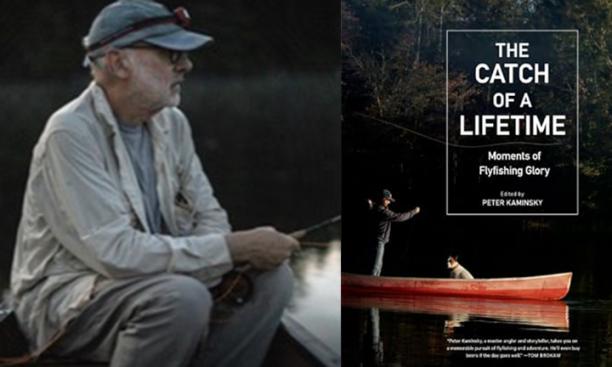
A multi-decade contributor at The New York Times, veteran of National Lampoon, and acclaimed food writer may seem like an unlikely person to produce a book that Trout Unlimited called “brilliant in concept, and even greater in execution.”
Yet Peter Kaminsky ’69’s new offering, differing from his past cookbook publications, is a much-feted collection of stories about fly fishing, edited and introduced by Kaminsky himself. Featuring a diverse cast of contributors, from authors to musicians to professional fishermen, The Catch of a Lifetime documents a huge array of perspectives on the sport, what it means to various individuals, and their memories of being out on the water. PAW spoke with Kaminsky about his career and his experiences fly fishing following the book’s publication.
How did you initially get into fly fishing?
I didn’t grow up as a fisherman, I had kind of a strange entree into it. I was an editor of National Lampoon in the early to mid 1970s, which was a crazy time there. On a vacation in the Yucatan, I saw these guys fly fishing, and I thought it looked great. I returned to New York and took it up. It was the perfect antidote to life at the Lampoon in those years. It sort of took over my life when I left school, and I just started to write about it.
Do you think that there’s something about it that appeals to people across such different backgrounds?
I was able to reach out to a number of communities — having an outdoors column in The New York Times for 35 years, people read it. Folks who I hadn’t met, I sent inquiries to, and they piped up and sent in an essay, and it was quite gratifying. Carl Hiaasen, I really didn’t know Carl, other than through this book. He contributed. Mark Kurlansky contributed. I read that Rachel Maddow was a fly-fisherwoman. I sent a note to her literary agent. When you send notes to celebs you think maybe you’ll hear back and two months later, something showed up and it was really good. I think people have … a real attachment and affinity for fly fishing. And so, when I was able to reach those people, a number of them came in with their stories.
Were there any that that stood out especially as being particularly heartfelt or meaningful, or took an unexpected turn?
The first essay in the book is by a person who’s not a professional writer. He’s an art teacher. And he makes art using fly tying materials, using a cloth. And he wrote a very strange piece about going to a stream that he fished in Connecticut with his dad, and he was confronted by a giant blue heron. And when I sent the manuscript around to colleagues to read, everyone said, this story really sticks out, so I put it first. So that one was pretty terrific.
There’s a woman named Paige Wallace, a photographer who lives in the West, who I think I noticed perhaps on the Fly Lords website. I don’t know her, I but I saw that she was a writer on Instagram. And she sent me a wonderful piece comparing meeting a partner on the dance floor with tangling with a trout — that really sticks out.
Nick Lyons’ piece was quite wonderful. It’s how he became a fisherman. Well, how he met his wife. That’s a great piece. So, I grew quite attached to all of them.
How would you suggest people who have never tried fly fishing get into it?
The best way to start fly fishing is to take some casting lessons. The cast is the heart of the sport. It’s not super difficult to get started, but you need someone to point you along the way. That’s what I did. It’s what I’ve done for others. And if it’s for you, it’ll feel great.
— Interview conducted by Jack Hartman ’24
